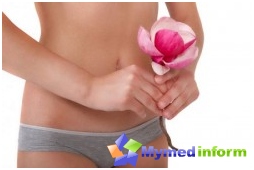
During dysplasia, the normal cellular structure of tissues is disturbed. At the same time, atpic cells appear on the cervix, which are able to be reborn into such a dangerous disease, like cervical cancer, and, I must say that this is the oncological disease is quite common in women, as well as mammary cancer.
Development of uterine cervical dysplasia is most often provoked by the oncological taps of the human papilloma virus. This is a very common virus. Therefore, the probability of catching this virus during life is quite high.
To date, there are several types of this virus that can trigger oncological diseases, but the most dangerous is the VIUI-16 and HPV-18 viruses. If these viruses contain more than a year in the body of women, then gradual changes occur in the structure of epithelium cells and the development of dysplasia occurs. In just ten years, this infection is able to turn a healthy cervix into a cancer, and the dysplasia is already a pre-executive stage. There are some factors that aggress this process. Such factors in particular include active sexual life, inconstancy of partners, unprotected sex, protracted sex infections, cervix injuries and violation of hormonal background. In addition, the risk group includes patients who smoke. The fact is that tobacco slowly, but correctly leads to the fact that the fabrics will lack oxygen, and this leads to a deterioration in local immunity. These processes increase the likelihood of microtrams of the cervix epithelium.
Degrees and species

The danger of the pathological process is that with violation of the building of the epithelium, almost no symptoms are manifested. Therefore, a woman for a long time may simply not guess that she has this disease. Characteristic symptoms may well manifest only when connecting the inflammatory process. In particular, the patient may change the consistency and the number of selections. In addition, it may appear itching and burning. With the introduction of tampons or due to sexual intercourse, a patient may occur by suction or bleeding. Very rarely, such symptoms are manifested as an increase in temperature, change in well-being, pain and discomfort.
Diagnostics

To diagnose this disease, first of all, the instrumental and laboratory methods are used. This usually takes several consecutive procedures. First, the uterus is performed using a vaginal mirror. This is done in order to inspect the uterus on the availability of visible changes. Such violations can be a change in the color of the mucous membrane, the growth of the epithelium and the appearance on the mucous mesenter. After such an inspection, the colloscopy is carried out, which is the inspection of the cervix of the patient using a special device - a colkoscope, capable of increasing the picture of the mucous meal tenfold. In addition, a dad-stroke is held, in which the scurs are taken from different sections of the cervix. After that, the resulting scales are investigated under a microscope for their atypidity. In addition, this diagnostic method makes it possible to find so-called papillomavirus infection markers. These markers are the place where the viruses of human papillomas settled. If these viruses were found with the help of immunological methods, the virus strain is installed. In addition, it turns out oncogenic he or not oncogenic. In addition, the concentration of the virus in the patient's body is set.
Treatment of cervical dysplasia

If the dysplasia of the uterus has been discovered, it does not mean that it must be necessarily cured by the radical method. The decision on treatment is made by a doctor who must take into account many factors. Requires thorough research. In addition, such factors such as the age of the patient, the degree and severity of the cervical dysplasia, information about past births must be taken into account.
So, if a light or medium dysplasia originated from a young woman who has not yet gave birth, then she later can pass after a while. Nevertheless, this does not mean that you need to forget about the presence of dysplasia. The fact is that sometimes the doctor advises to wait, but at the same time carry out control with the help of a cytological study every 3-4 months.
If a decision is made on the need for treatment, this treatment is usually carried out in the form of deletion of a defective area and in the form of rehabilitation therapy.
The decision to remove the defective area must be weighted. The fact is that some operations may threaten complications. In particular, the scars on the cervix may remain, possibly the development of infertility, sometimes there is a violation of the menstrual cycle. In addition, premature childbirth and exacerbation of certain diseases of the urogenital system are possible.
Deleting a defective area can be produced using a chemical coagulation method. This method is usually carried out when the lesions are not large and not deep. In addition, the defective area can be removed by electricity. This procedure is usually called «Moxion». This is a simple and fast operation, but due to the fact that it is difficult to determine the depth of the electricity, after that the scars can remain.
In addition, defective fate can be removed by cold. This method is usually performed using liquid nitrogen, which freezes damaged tissues to very low temperatures. True, this method is not suitable for heavy dysplasia. In addition, it is impossible to control the depth of the freezing.
Defective areas can also be removed with a laser, which allows the most accurate and effectively to affect damaged areas. True, this method can be very painful. As a result of such manipulation, even the appearance of bleeding.
With restorative therapy, preparations are prescribed preparations containing vitamins A, C, E, B6, B12. In addition, in such preparations there are bioflavonoids, folic acid, beta-carotene, selenium, and polyunsaturated fatty acids. All these elements are necessary for prevention of dysplasia.









